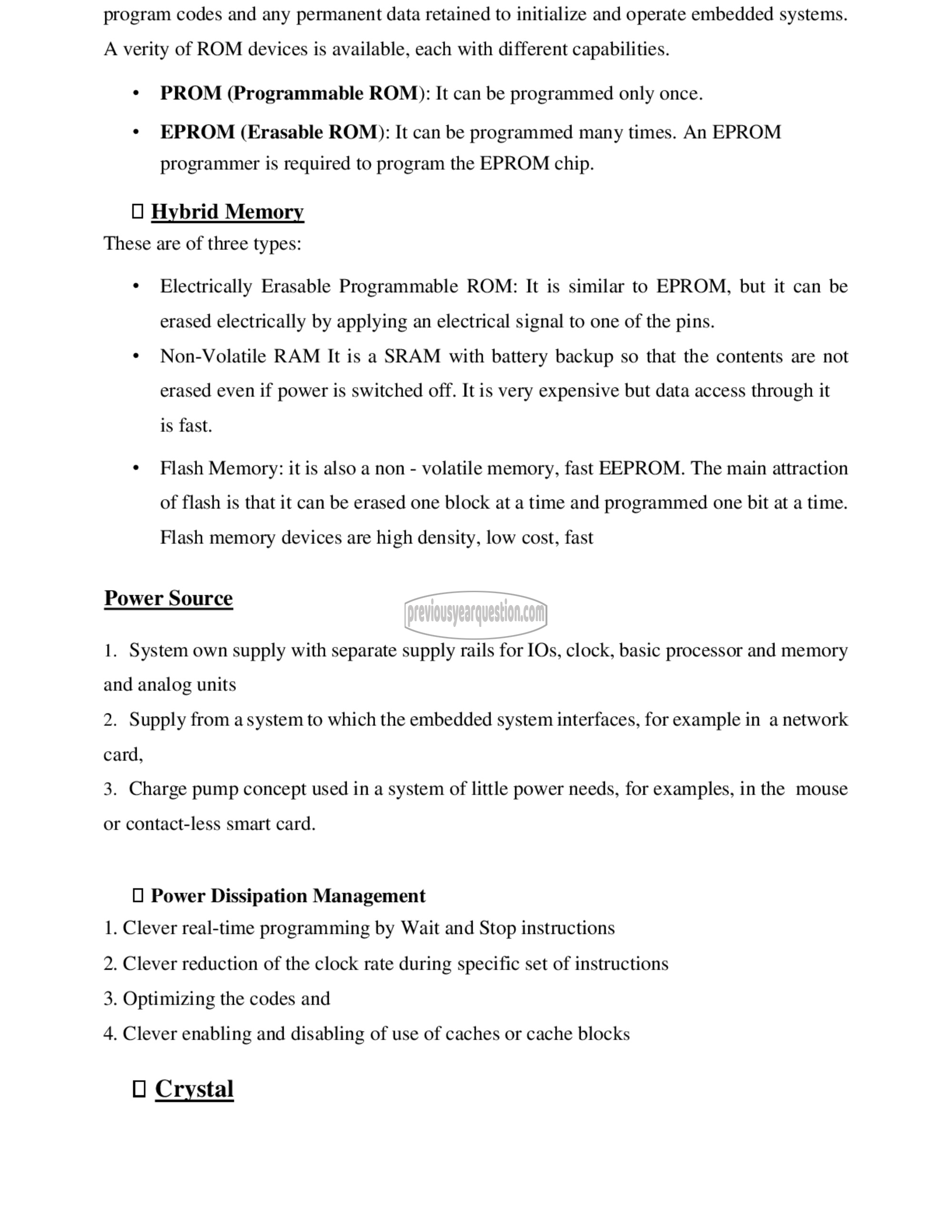APJ ABDUL KALAM TECHNOLOGICAL UNIVERSITY Previous Years Question Paper & Answer
Semester : SEMESTER 6
Subject : Embedded System
Year : 2018
Term : MARCH
Scheme : 2015 Full Time
Course Code : EC 308
Page:7
program codes and any permanent data retained to initialize and operate embedded systems.
A verity of ROM devices is available, each with different capabilities.
° PROM (Programmable ROM): It can be programmed only once.
٠ EPROM (Erasable ROM): It can be programmed many times. An EPROM
programmer is required to program the EPROM chip.
1 Hybrid Memory
These are of three types:
¢ Electrically Erasable Programmable ROM: It is similar to EPROM, but it can be
erased electrically by applying an electrical signal to one of the pins.
* Non-Volatile RAM It is a SRAM with battery backup so that the contents are not
erased even if power is switched off. It is very expensive but data access through it
is fast.
¢ Flash Memory: it is also a non - volatile memory, fast EEPROM. The main attraction
of flash is that it can be erased one block at a time and programmed one bit at a time.
Flash memory devices are high density, low cost, fast
Power Source
1. System own supply with separate supply rails for 108, clock, basic processor and memory
and analog units
2. Supply from a system to which the embedded system interfaces, for example in a network
card,
3. Charge pump concept used in a system of little power needs, for examples, in the mouse
or contact-less smart card.
[1 Power Dissipation Management
1. Clever real-time programming by Wait and Stop instructions
2. Clever reduction of the clock rate during specific set of instructions
3. Optimizing the codes and
4. Clever enabling and disabling of use of caches or cache blocks
ப Crystal
